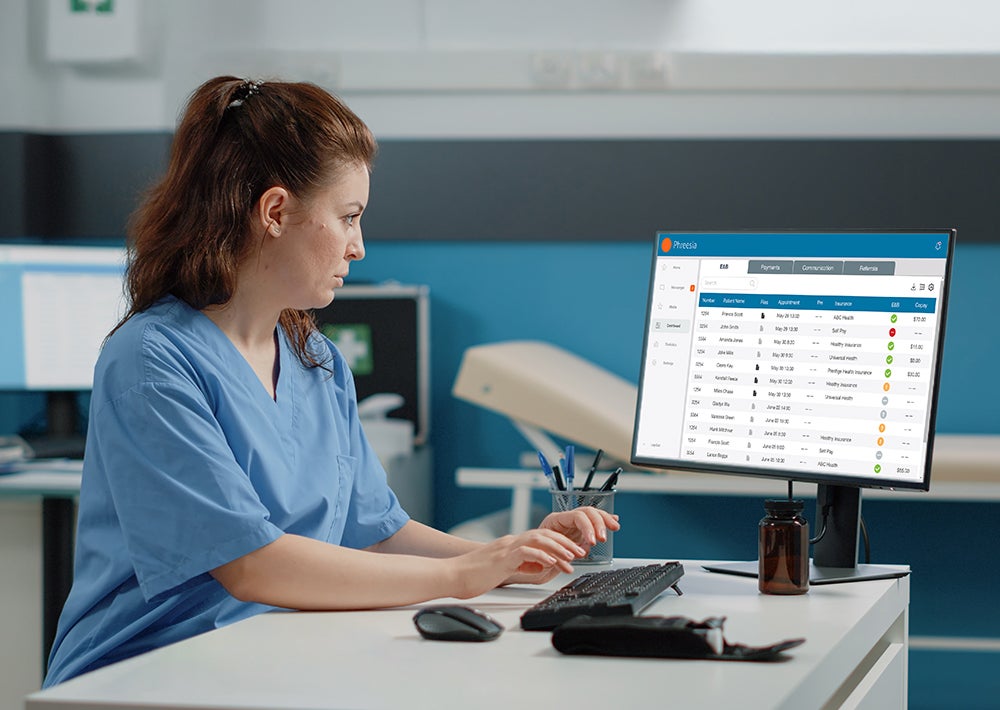The moment a patient is discharged from a care setting, like a hospital or rehabilitation facility, is one of the most critical in their care journey. They may be leaving with prescriptions for new medications that cause severe side effects. They may face mobility challenges, like learning to walk again after a hip fracture or spinal surgery. If they’re recovering from a stroke, they may need time to adapt to their new cognitive reality.
These challenges underscore the importance of planning for a patient’s discharge; and adding to the complexity of the situation is that no two patients will experience this moment in the same way. This means that if a care team develops a generic plan for patients across demographic characteristics and medical conditions, it is doomed to fail. The most successful discharge plans are the ones that meet each patient where they are, that are tailored to their specific needs.
To develop an individualized discharge plan, the care team needs to know as much as possible about the patient. And while information about allergies, blood pressure and height are in the electronic health record (EHR), a patient’s knowledge, confidence, and skills to manage their own health is not. We call this the patient’s activation level.
This missing piece of crucial information is vital to the discharge process. Why? Because more activated patients are more likely to be able to navigate their new reality post-discharge, while less activated may need more support from their clinical team and caregivers.
That’s why Phreesia recently submitted comments asking the Centers for Medicare and Medicaid Services (CMS) to adopt the Patient Activation Measure® (PAM®) in the following 2025 Medicare proposed payment rules:
- Skilled Nursing Facility Prospective Payment System (SNF PPS)
- Inpatient Rehabilitation Facility (IRF) Prospective Payment System (PPS) and Updates to the IRF Quality Reporting Program (QRP)
- Hospice Wage Index and Payment Rate Update, Hospice Conditions of Participation Updates, and Hospice Quality Reporting Program Requirements
- Hospital Inpatient Prospective Payment System (IPPS) and Long-Term Care Hospital Prospective Payment System (LTCH PPS) Proposed Rule
At Phreesia, we believe that when every person is an active participant in their care, they and their care team see optimal health and outcomes. Phreesia proudly stewards the PAM, a brief survey that assesses patients’ knowledge, skills, and confidence in managing their own healthcare. Based on their responses to the survey, patients are grouped into one of four activation levels (PAM level 1 – very passive to PAM level 4 – very proactive) that provide insight into health behavior-related characteristics, allowing health care providers to identify risks, tailor interventions, and efficiently allocate resources to support patients.
Patient activation is a key component of person-centered care, and a large body of peer-reviewed research has shown that supporting activation in patients is critical to clinical and mental health outcomes, medication adherence, disease self-management, and treatment satisfaction across numerous patient populations and chronic diseases. In fact, PAM scores predict most health-related behaviors, regardless of health status or conditions. Importantly, interventions designed to increase activation also result in decreased costs and provider burden.
The Value of Patient Activation in Skilled Nursing Facilities (SNFs) and Inpatient Rehabilitation Facilities (IRFs)
Given the relatively short average patient length of stays in SNFs and IRFs, we recommend that CMS include the PAM in these proposed rules, and that patients take the PAM survey at admission because the PAM is clinically proven to improve outcomes for medical conditions often associated with Medicare SNF and IRF stays. These conditions include strokes, neurological conditions, rehabilitation after surgery, and cardiac rehabilitation, among other conditions.
The PAM also supports successful discharge planning, including better coordination with other healthcare providers, facilities, and agencies during and following these vulnerable transitions of care. PAM can improve the rate of successful discharge to the community by accounting for the patient’s ability to self-manage their care in the community. For example, one randomized control trial conducted with 695 participants at an urban safety net hospital found that patients with lower levels of activation had a higher rate of post-discharge 30-day hospital utilization. Tailoring discharge plans to support patients with lower activation will improve outcomes.
The Value of Patient Activation in the Hospice Quality Reporting Program (QRP)
Activation and empowerment during serious illnesses gives patients and caregivers confidence to take on these new roles and skills. For these reasons, we recommend CMS include the PAM patient and caregiver surveys in the Hospice QRP.
Several empirical studies indicate the importance of activation in end-of-life care. For example, one study assessed how patient activation is associated with behaviors and experiences of people with cancer. More activated patients are more than 9 times as likely to feel their treatment plans reflect their values, 4.5 times more likely to cope with side effects, and almost 3.3 times more likely to initiate a healthier diet after their diagnosis, than are less activated patients.
The Value of Patient Activation in Hospital Inpatient and Hospital Long-term Care Prospective Payment Systems
PAM is a reliable and valid measure for use in the inpatient hospital setting and would build on current measures in several Hospital Inpatient Quality Programs by identifying readmission risks, supporting discharge planning and surgical episodes of care as well as transitions of care (as discussed above), and improving outcomes while reducing costs.
Improvements in PAM have been associated with reductions in high-cost and potentially avoidable utilization events. For example, a San Mateo County Health program for high-risk Medi-Cal beneficiaries leveraged PAM for resource allocation and patient coaching. As a result of the tailored approach, they achieved an 18% decrease in monthly emergency department (ED) visits and a 53% decrease in monthly inpatient stays among those who saw improvements in patient activation levels.
In South Carolina’s Health Outcomes Plan (HOP), a state program that incentivizes hospitals to partner with safety net providers and community-based organizations, PAM was used to improve care coordination in a population of Medicaid and uninsured patients with chronic conditions, who are high utilizers of ED services. In a published evaluation of the program, (ED visits per 100 participants per month dropped from 29 (in the period of 0-6 months pre-HOP) to 18 (in the period of 19-24 months post-HOP). In the same period, the average cost reduction, to 8,109 participants who were enrolled in the program for 24 months, was over $6 million.
Conclusion
More than 300 health care organizations in nearly a dozen countries are using PAM to identify risks and allocate resources to patients who may need more support along the care journey. This is critical at the point of admission and discharge, to ensure a smooth transition for patients to thrive outside a care setting and return to their normal lives.
The PAM-PM is already in use among several CMS quality programs, including the CMS Innovation Center’s Kidney Care Choices Model, and the Merit-based Incentive Payment System (MIPS), including 18 specialty sets and 5 MIPs Value Pathways. When adding PAM to MIPS, CMS stated that the measure is “broadly applicable” and a “high priority” quality measure that “ensures capture of the patient voice and experience of care related to the patient’s understanding and confidence in their ability to manage their health and be an active partner in their health care journey.”
To that end, we urge CMS to include the PAM in these four quality and payment programs.





